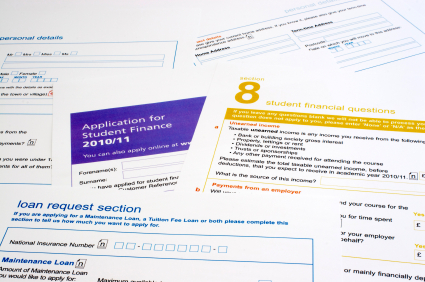Consolidate Your PLUS Loans
Grads and Parents Face More Financial Burdens
In loan consolidation, your existing student loans are paid off and replaced by a new, large loan combining all those amounts. You only have to track one monthly payment, and that payment may be lower if your repayment term is lengthened (the maximum in the Direct Consolidation Loan, discussed below, is 30 years). Since this is a new loan, it will come with new terms and you will be able to make some choices regarding your repayment plan.
However, you should be aware that lengthening the term of your loan will mean paying more interest over the life of the loan and making more total payments, both of which increase the cost of the loan. If you had any special benefits like a principal rebate attached to your original loan, you will lose those when you consolidate.
Consolidation is final: you can’t reverse your decision at a later time, so consider your circumstances carefully before deciding. You’re usually eligible for a consolidation loan if you stop attending school for any reason or if your enrollment drops below half-time.

Federal Direct Consolidation Loan Program
Both old PLUS loans made under the now-defunct Federal Family Education Loan (FFEL) program and new Direct PLUS loans made either to graduate and professional students or to parents of dependent undergraduates are eligible for inclusion in a federal Direct Consolidation Loan. But the Direct Consolidation Loan isn’t limited to PLUS loans.
You may also consolidate the following types of loans:
- Direct Subsidized and Unsubsidized Loans
- Subsidized and Unsubsidized Federal Stafford Loans
- Supplemental Loans for Students
- Federal Perkins and Nursing Loans
- Health Education Assistance Loans, and
- even some types of existing consolidation loans, but not private loans.
Fixed And Capped Interest Rate
The Direct Consolidation Loan rate is fixed by the government based on the interest rates of your existing loans. The calculation rounds up the weighted average of those rates to the nearest one-eighth of a percent, but sets the maximum rate at 8.25%. Note: the weighted average means both the individual interest rates and the amounts of each loan will be included in the averaging process. If you have one $100 loan and one $1,000 loan, the weighted average will be closer to the rate on the $1,000 loan.
About Repayment
After the loan is disbursed, you will have, at most, 60 days to begin repayment. The company chosen by the U.S. Department of Education (your lender) to service your loan, called the loan servicer, will let you know when payment is expected. Repayment terms vary from 10 to 30 years in length, depending on how much you owe and which repayment plan you choose.
There are two repayment plans available for Direct Consolidation Loans, depending on whether or not the consolidation included a PLUS loan made to parents. They are called Income-Based Repayment and Income-Contingent Repayment.
The Income-Based Repayment Plan
The Income-Based Repayment Plan (IBR) is structured to lower your monthly payment amount in order to keep your loan out of default. It has one unique requirement for eligibility: your financial situation must qualify as a partial financial hardship, meaning your monthly repayment amount as calculated under the Standard Repayment Plan, using a loan term of ten years, is higher than your monthly repayment amount as calculated under the IBR.
In IBR, your monthly payment changes depending on your income and family size (defined as number of dependents plus spouse). You only need to reach partial financial hardship status once in order to qualify for a switch to IBR, so if your financial situation improves that will increase your payment amount but not render you ineligible for IBR. Your Direct Consolidation Loan will be eligible for IBR if it does not include any PLUS loans made to parents.
The Income-Contingent Repayment Plan
The Income-Contingent Repayment Plan (ICR) is for Direct Consolidation Loan borrowers who do not qualify for IBR. The maximum loan term is 25 years, and your payment amount is based on income, family size, and Direct Loan indebtedness, plus a third amount.
That amount is either the monthly payment you would make if you repaid the loan in 12 years, multiplied by an income percentage that varies with your income, or 20% of your discretionary income, whichever is less. Fortunately, the pages linked above for IBR and ICR have calculators, so you do not have to perform the computations on your own.
Background Information
Loan Type
- Alumni
- Bad Credit
- Cash Back
- Cheap Options
- Direct
- Graduate
- In-School
- Legal
- Online
- Perkins
- PLUS
- Stafford
- Undergraduate
